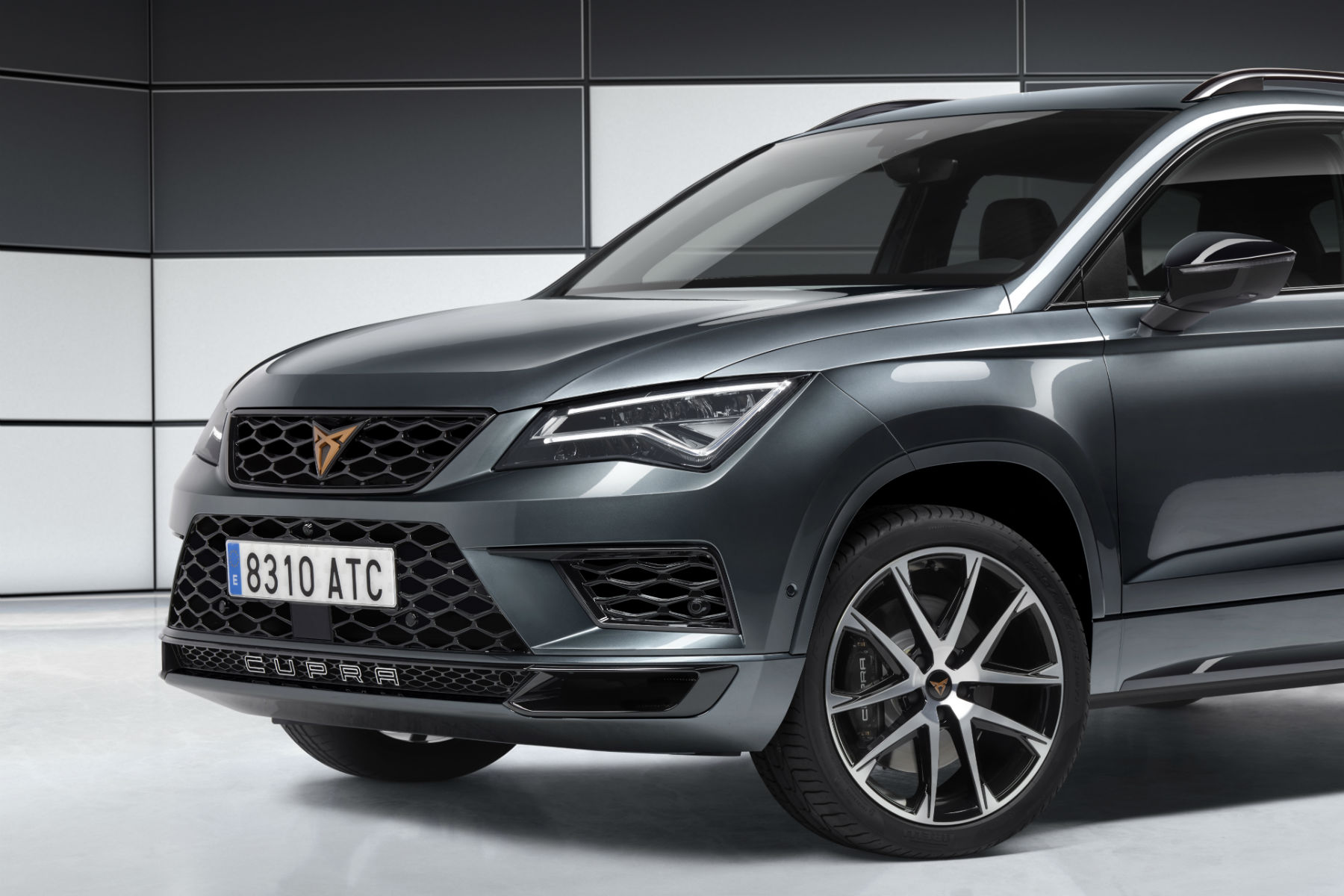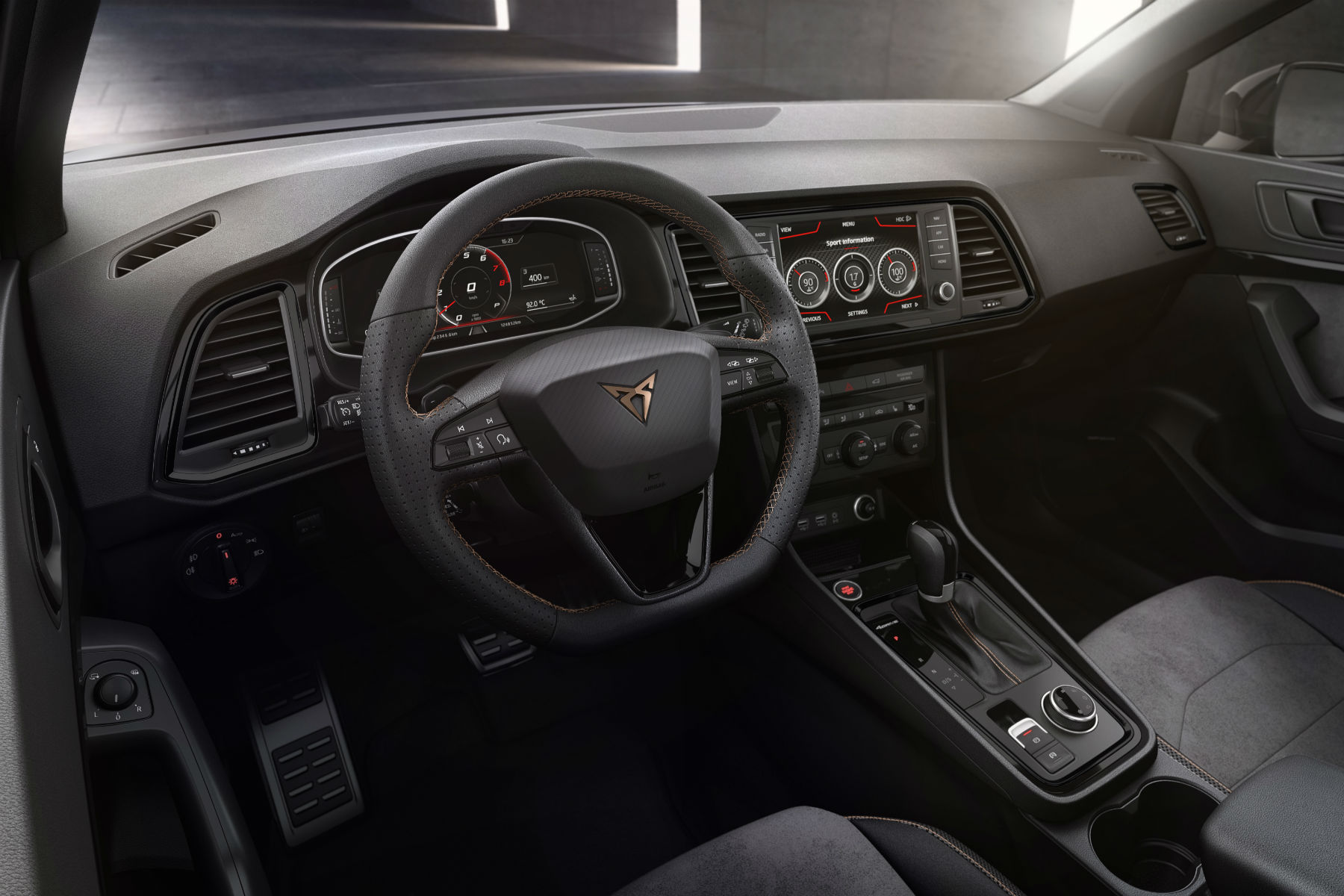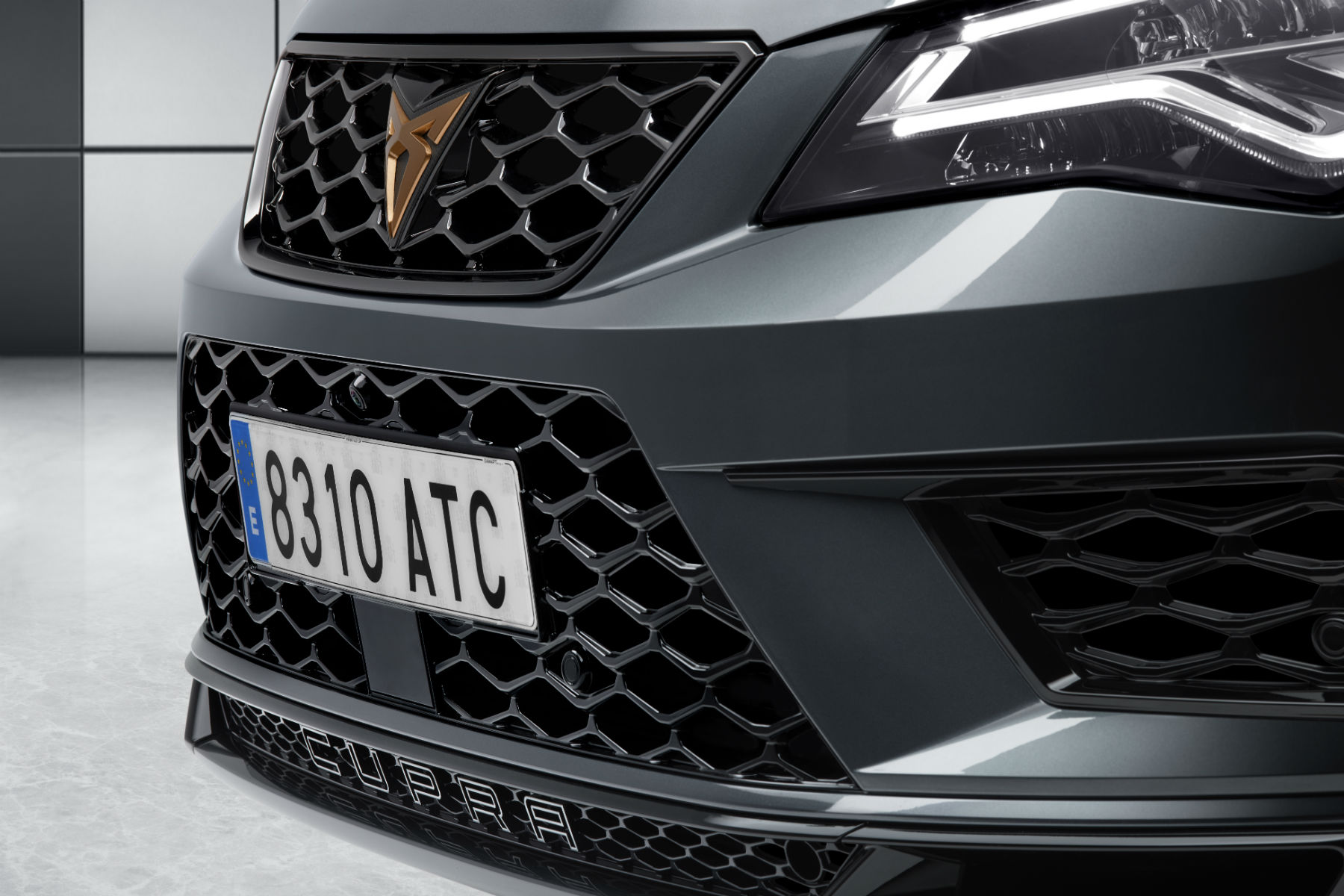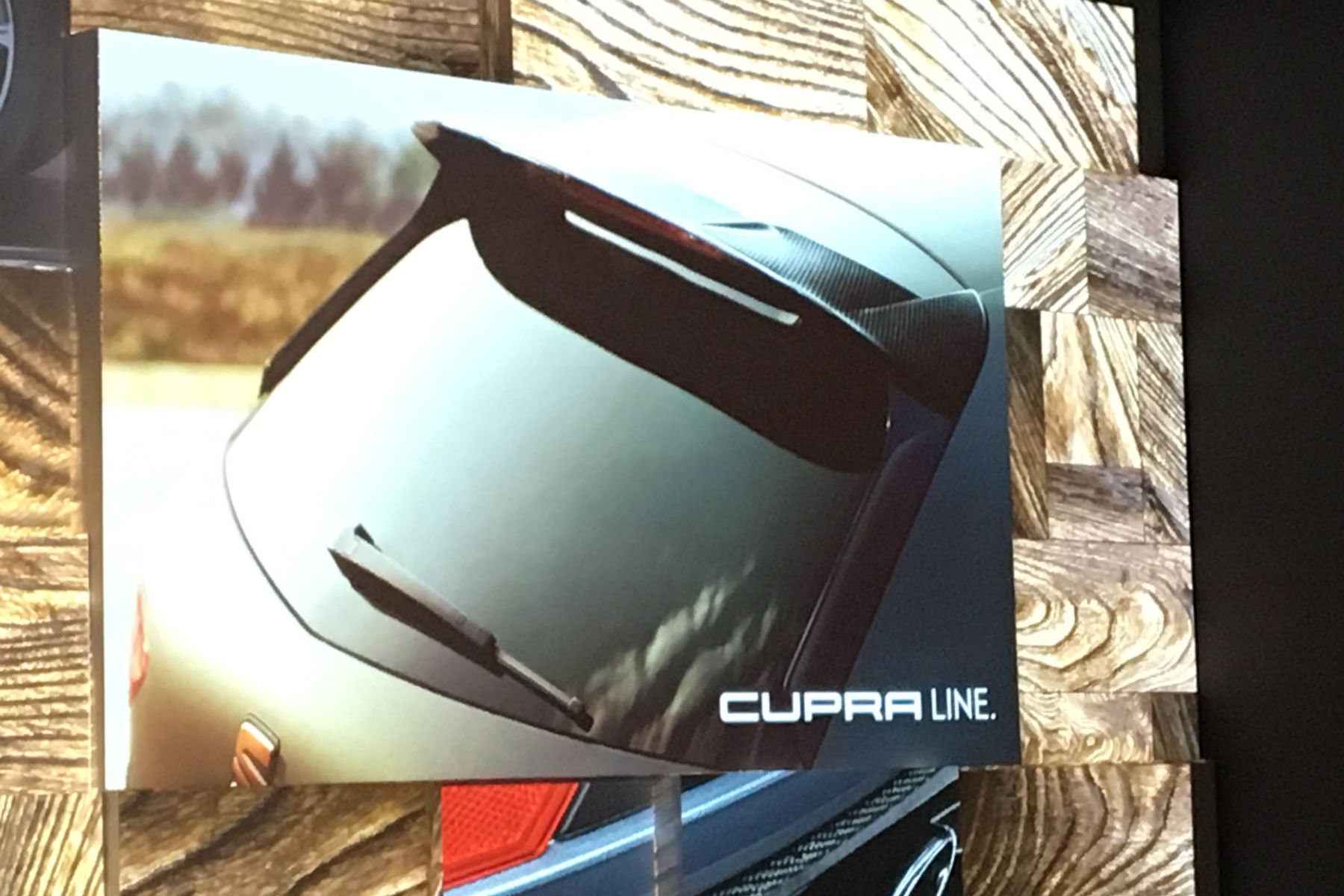
The new Cupra sub-brand has made its official debut ahead of its public launch at next month’s Geneva Motor Show. From now on, all new sporty Cupra models will be badged solely as Cupras, without any Seat branding.
It comes as the sporty offshoot reveals its first new model in the form of the new Cupra Ateca SUV, which made an appearance at a glitzy event in Barcelona yesterday. The event – attended by media from across Europe and a number of senior executives from the Cupra brand, gave us an opportunity to find out more about what the firm stands for and how it’s going to work. Here’s what we learned.
1: Seat has an image problem
Would the Seat badge put you off buying a car? According to marketing chiefs, some people will never buy a Seat – no matter how good it is. “We could [make] the best product in the world, but for some people who are more image-sensitive, they will not take one of our cars,” Seat boss Luca de Meo told Motoring Research.
We’re not sure that’s entirely true in the UK. Sister brand Skoda hasn’t been the butt of jokes for years now, and Seat has never really been viewed as a brand to avoid. Indeed, our quick straw poll reveals that two thirds of people don’t think Seat has an image problem. Clearly, that’s not the case around the world.
Quick question: do you think Seat has an image problem? Marketing chiefs reckon it has, and launching Cupra as a separate brand is one way to shake it…
— Andrew Brady (@TheAndrewBrady) February 22, 2018
“You still have, in some markets, a certain level of rejection of the Seat brand,” explained de Meo. “Starting from scratch with something new [means] we can attract customers who will not, in other cases, buy Seat.”
It’s a simple idea – some people won’t buy Seats, so removing the Seat badge and swapping it with a Cupra badge is one way of attracting new customers and charging them more money for cars. However…
2: Cupra isn’t premium

You might think this smacks of Seat going upmarket, but doing so would tread on the toes of fellow VW Group brands Volkswagen and Audi.
“There are enough [premium brands] around and the traditional, prestigious, premium [market] is occupied,” said Seat’s sales and marketing vice president, Wayne Griffiths. “I don’t think these classical, prestigious, premium values speak to these young people.”
Cupra says it plans to attract customers from between the mainstream and premium segments, but it’s reluctant to name brands that it intends to rival. Seat already has a high level of conquest (new customers coming in from other manufacturers account for around 60 percent of sales in the UK), but the firm expects this will be even higher for Cupra.
Bosses predict around 80 percent of Cupra customers will come from other brands, moving from mainstream cars but not yet feeling ready to buy an old-fashioned premium car such as an Audi or Mercedes-Benz.
3: Cupra will be a money maker for Seat
Griffiths isn’t shy about his hopes for Cupra. “We want to double sales,” he says. “Within five years.”
That’s quite a target for a brand that’s only just separating itself from its parent company, but Griffiths points to the current figures.
“We did 10,000 [Cupra models] in 2017,” explains Griffiths. “We want to do much more than 20,000 when we have the Ateca and some other models later. But that’s in the short-term… we have to because this brand is only going to fly if it’s visible. And you’re invisible if you’re below 10 percent of the mix.
“It will be an important profit-driver but also volume for as well,” he adds.
Despite this, numbers will be deliberately limited to aid residual values and allow tempting finance and leasing deals to be offered. “The only way to make residual values better is not to build more cars than you can sell,” said Griffiths.
4: A Cupra Ibiza and Arona could be in the pipeline – but not a Mii
The brand is being launched with the 300hp Cupra Ateca SUV – but there are seven new cars planned within the next three years. An Arona and Ibiza are both being considered, but Cupra hasn’t decided whether they’ll reach production. We suspect both are likely.
“[The Ateca] will be a great opportunity for us to position the brand but we’re looking for more product as well – so, more Cupra models, because if this brand is to be sustainable in the future than it needs a product base,” said Griffiths.
“We have the Leon, we have the Ateca, we are looking at other cars in [Seat’s] range that we could do a Cupra car of – whether that’s Arona or Ibiza – or, in the future, even go as far as launching a car purely as a Cupra car. Somewhere in the future our product range will be suitable for doing that.”
When asked whether the affordable Mii city car could be on the horizon, Griffiths said: “It wouldn’t be something I’d focus on at the moment. I think there are other segments that are more profitable and more fitting with the Cupra values.”
A Cupra Arona and Cupra Ibiza are being considered but not confirmed. We’re unlikely to get a Cupra Mii, unfortunately. pic.twitter.com/8JFLZIxM70
— Andrew Brady (@TheAndrewBrady) February 22, 2018
5: Electrification will happen
Although Cupra insists there’s a future for the internal combustion engine, future models are likely to feature some sort of electrification in a bid to reach tightening emission targets.
This doesn’t mean they’ll be boring to drive, insists Cupra.
“[They’ll feature] electrification in a sporty way, not electrification in a driving fun limiting way,” said research and development chief Dr Rabe. “That means a plug-in hybrid. It’s going to be much more sporty [than current plug-in hybrids].”
Griffiths also touched on electrification – saying that Cupra will take inspiration from motorsport in a bid to lower its emissions.
“The whole issue of motorsport will move to a future where they’ll be ecological – whether that’s with electric motor sport cars you might see in the near future – or plug-in hybrid, performance hybrid or using CNG-powered cars.
“We are working in parallel to make sure this new brand is sustainable as a performance brand in an ecological environment where we have to fulfill CO2 requirements.”
6: The logo is meant to look like a tribal tattoo

The logo, which was revealed last month, is intended to feature two back-to-back Cs while also looking like a tribal tattoo, explains Griffiths.
“It would be great to have a wonderful explanation about where [the logo] came from but it’s difficult, because it doesn’t really have a history. The brand is brand new, so there’s no heritage, it’s not trying to get something from the past which, when you look at Abarth or other brands do… all of them are trying to make their sports brands out of the past and heritage but we want to look to the future.
“It should stand for a tribal tattoo… for people who want to belong to something special without having to show off. It doesn’t have to be a star or a four rings or whatever, it’s something different. And we think this tribal thing could be a brand that attracts the younger target group.”
Although the brand goes short of insisting its customers get genuine Cupra tattoos, Griffiths hinted that all customers could be given a bracelet to make them instantly recognisable as Cupra tribe members.
“To be able to recognise these customers, we want to introduce a Cupra ID, perhaps with this bracelet, so we know who is part of this Cupra world and so that we know we can treat them properly and in a different way.”
7: One in five Seat dealers will become Cupra specialists
Although all UK Seat dealers will be able to sell new Cupra models, around 20 percent will become Cupra specialists. These will have the cars on display and available for test drive, while ‘Cupra masters’ will be on hand in the showroom and workshop to take care of customers.
“My dream is, in certain areas where there is a big Cupra demand, I can imagine having specific Cupra showrooms,” said Griffiths, adding that Cupras account for as much as 10 percent of Leon sales in areas such as Munich, which would be a sufficient demand for a Cupra-specialist dealer.
All Cupra models will come with a four-year warranty and a service and maintenance package included in the deal.
8: There’ll be a Cupra Line

Can’t afford or don’t want a hardcore Cupra? The brand will also be used to sell parts for Seats. You’ll be able to buy Cupra accessories for your cooking-spec Seat.
“Why not offer [Cupra Line] to some of the Seat products?” asks Rabe. “That’s not so much performance – maybe a wheel package, maybe an interior package or something like that.
“But first of all we want to establish a brand. You will not see this spread to other cars within this year. It will come later.“
Cupra’s marketing chiefs also revealed that it’s working with fashion and sunglasses companies, meaning you’ll even be able to dress in Cupra-branded clothing.
9: You’ll be able to drive a Cupra every day
Anyone who’s driven the Cupra R will tell you that it feels a rather extreme hot hatch. Fortunately, for those of us who want to drive a Cupra every day, future cars from the brand will not be much more extreme.
“I don’t want to get rid of the daily drivability [of Seat’s Cupra models],” explains Rabe. “It is important to have that balance. The Cupra customer wants to be excited every day while driving, and therefore that balance should be there. That means on the comfort and daily-drive side, I want it to be at least the same as today, but why not go a little bit more on the edge of the sporty side?”
He adds that engineers were allowed to go a little more focussed with the Cupra R as it was a flagship model for the brand, but the Cupra Ateca will cater for a different market and won’t be as extreme. In the future, Rabe expects to offer Cupra and Cupra R versions of the same models to cater for different tastes.
Read more:
- The Seat Leon Cupra R has sold out in the UK
- Seat Leon Cupra prices cut by nearly £2,000
- 2017 Seat Ibiza review: is this the best supermini on sale?
[…] Seat’s sporty new Cupra sub-brand: 9 things we’ve learned […]